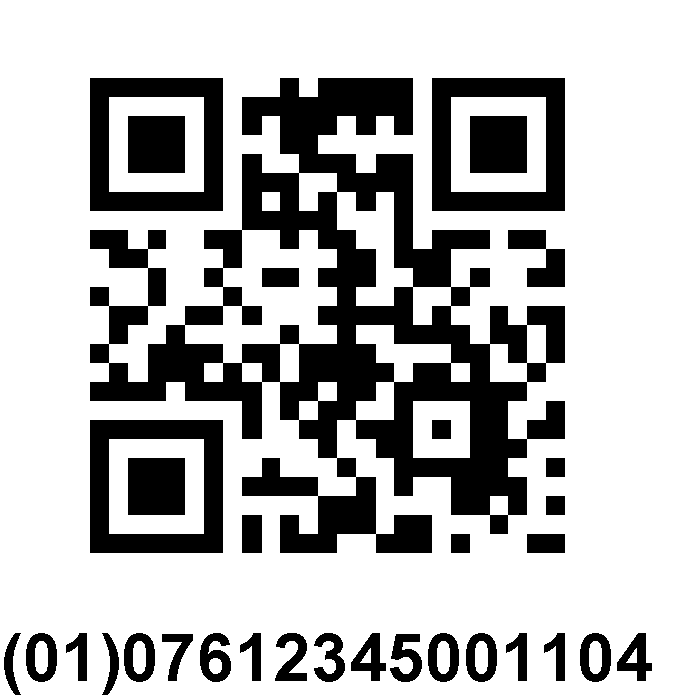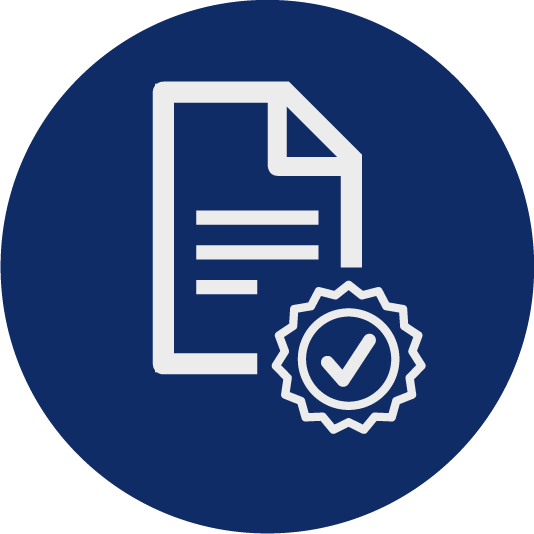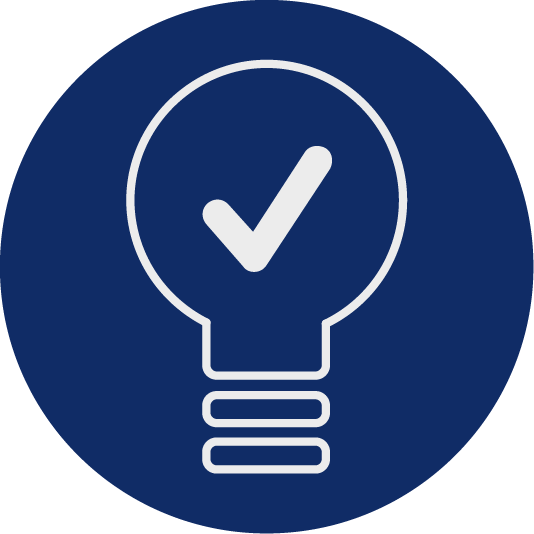Technical industries rely on standards
GS1 standards as a gateway to Industry 4.0
Topics such as modern materials management, sustainable data management, global traceability and customer-oriented plant maintenance make GS1 standards an important tool for the technical industries. GS1 Switzerland places a focus on the industry in its activities.
The technical industries address the needs of the railway, construction, real estate, machinery, electrical and metal industries (MEM). Together they form the largest industrial employer and one of the largest export sectors in Switzerland. The digital networking of products and end-to-end data management across the entire value chain enables new business models and presents the technical industries with both challenges and new opportunities.
In order to share data, build knowledge or automate processes in the supply chains of the technical industries, internal company data silos in which information is collected and managed must be shared with partners. This prevents product master data from existing in different versions and being stored in different databases.
Products in these industries not only have countless parts, but also have lifetimes of up to 60 years, during which maintenance is often required. In the absence of unique part identification, traceability is hampered and supply chain efficiency is hindered. Without standardised identification, the exchange of product data is just as challenging as the tracking of maintenance history.
Here, GS1 standards create a common foundation by enabling products, locations and assets to be uniquely identified, correctly recorded and information about them automatically exchanged. Since the non-overlapping GS1 identification keys are unique worldwide, they can be used inside and outside companies. Thus, the serialised Global Trade Item Number (SGTIN) can be used in parts authentication, warehouse and inventory management as well as for maintenance and repair activities.
Documents
For new members
Industries of the Technical Industries:
These topics might also interest you:
Advantages through GS1 standards in the fashion sector
GS1 Standards comes into fashion
The fashion market is in a state of upheaval. The classic retail models are increasingly coming under pressure. Manufacturers are taking over more retail functions and the share of private labels in retail is steadily growing. In addition, customers demand individualised product offers, high flexibility, ever faster changing collections - and all with first-class customer service.
Customers no longer buy only online or offline. They use many channels as well as digital marketplaces in parallel. Especially in the fashion industry, consumers want to know which model, in what size, is available where. The basis for this is efficient inventory management and an automated exchange of data. Companies can meet these challenges with fast and standardised communication. The basis for this are the identification, communication and process standards of GS1.
GS1 standards enable:
Optimisation of sales areas and increase in the availability of goods
The more precisely consumers are informed about available products in a shop, the more satisfied they feel and the longer they stay in the shop. Transparent processes are needed for such information to enable a reliable overview of the current inventory and a quick supply of goods. The basis for this are the GS1 barcodes and the radio frequency technology EPC/RFID. They make it possible to capture inventories more quickly and optimise inventory levels.
Protection against product piracy
Every year, millions of counterfeit garments enter circulation. The key word for counterfeit protection is serialisation. It makes every product an original. The serial number of a product combined with the global article number GTIN works like an identity card for articles of any kind. The number remains linked to the unit as long as it exists.
Protection of goods against theft
The use of radio frequency technology EPC/RFID provides double protection for products: on the way from the manufacturer to the retailer and at the point of sale (POS).
Vertical partnerships
From the partnership agreement to the processing at the point of sale: The recommendation "Consignment, commission, concessions - distribution centre and branch" defines the individual business models and the associated processes in a standardised way and describes them in detail.
Automated exchange of information
GS1 standards for electronic data interchange (EDI) make it possible to report store- and article-specific inventories and ensure a continuous supply of goods.
Optimisation of processes with EPC/RFID
EPC/RFID is considered a key technology for optimising and accelerating all processes in the textile supply chain.
Traceability with GS1 standards
Transparency with GS1 Standards
Traceability refers to the possibility of being able to trace at any time where, when and by whom a product was manufactured, processed, stored, transported, consumed or disposed of. For this, the goods must be uniquely identified. With the standards and products of GS1, the requirements can be implemented globally and clearly.
Consumers, authorities and various quality assurance and product standards demand transparent information on raw materials and primary packaging. The brand owner must be able to answer questions about the origin of raw materials, production methods and intermediate stops quickly and completely.
With a good traceability information system, the brand owner can quickly isolate possible problems and provide competent information. This creates trust among consumers and authorities.
GS1 standards make traceability possible in the open supply chain. Globally unique identification keys for articles, trade units or logistical units and locations combined with globally valid semantics for lot and serial numbers and transaction data allow products and locations to be traced back to the batch or package level.
In addition to identification keys, GS1 data carriers such as EAN/UPC barcode, GS1 128 barcode, GS1 DataBar or GS1 DataMatrix are used. The information is transmitted via standardised message formats such as EANCOM or GS1 XML.
In addition to the food industry, more and more manufacturers from the healthcare and technical industries are also relying on GS1 standards to ensure traceability.
Learn more about these topics:
Digital Link
The future of product labelling
GS1 Digital Link connects GS1 identification numbers to the web. With the global standard, different information is available via a single link and may be adapted at any time without having to renew the link.
What can GS1 Digital Link do?
GS1 Digital Link offers numerous possibilities:
The simplest use case is to generate a link for a specific GS1 article number (GTIN). GS1 Digital Link enables you to create the digital twin of your products.
Scan the following QR code with your mobile phone and you will be redirected to the GS1 General Specifications which are identified with the GTIN 7612345003993.
Encoded in the QR code is the link generated via the GS1 Digital Link Resolver, https://id.gs1.ch/01/07612345003993, which contains the GTIN of the GS1 General Specifications. GS1 Switzerland provides its members with a GS1 Digital Link Resolver so that they can exploit the full potential of the standard without any additional effort on their part.
Reasons for using a GS1 Digital Link
Why should GS1 members use the GS1 Digital Link Resolver from GS1 Switzerland?
There are numerous reasons. The following list is not meant to be exhaustive.
Trustworthiness and information sovereignty
The use of GS1's web address in the GS1 Digital Link shows that the distributor of this link also has the authority to establish such links. GS1 Switzerland only allows the owners of the GTINs to set up redirections.
Continuity
GTINs are rarely changed. A product usually carries its GTIN for the entire cycle of its existence. Accordingly, the GS1 Digital Links are long-lasting, as the GTIN is used for this purpose. If a link on your own website changes, the QR codes on the packaging do not have to be replaced.
Increase the reach
Many approaches, especially local ones, are not known to the wider world because nobody knows where and how to access these solutions. Global companies in particular need a kind of search engine to find out where which information is available. Linking these local solutions via the GS1 Digital Link Resolver network ensures that your data may be discovered.
Options instead of limitations
GS1 Digital Link enables all GS1 System users to take advantage of the possibilities opened up by the standard, and in particular by a GS1 resolver, in addition to existing implementations of the GS1 System. There are many different approaches to how and to what degree GS1 Digital Link may be used. Let the use cases inspire you.
Basics
The GS1 Digital Link standard essentially consists of two parts. The first part is the new language, which is technically called "syntax". This means that a language is created which works on the web but may also be used within the GS1 world. The second part is the so-called GS1 Digital Link Resolver, i.e. a practical solution offered by GS1, by our members themselves or by a third party. GS1 Digital Link apps may also be created using the GS1 barcodes that are already available. However, this requires that the app is capable of constructing a GS1 Digital Link from the data. Several different contents may be linked per GTIN. For example, links to product-related videos and product information websites.
With the help of the so-called "LinkTypes", specific links may be queried in the GS1 Resolver:
https://id.gs1.ch/01/07610032000010?linkType=gs1:relatedVideo
The different LinkTypes can be found here.
| [https://id.gs1.ch/ ] | = |
Address of the GS1 Resolver |
| [01] | = |
The type of GS1 identification number being requested.
"01" stands for the GTIN |
| [07610032000010] | = | The GTIN for which links are queried |
| [?linkType=gs1:relatedVideo] | = | the type of link that is being queried for |
A general query can be used to check what LinkTypes and which links have been registered for the queried GS1 identification number:
https://id.gs1.ch/01/07610032000010?linkType=all
The different LinkTypes can be found here.
| [https://id.gs1.ch/ ] | = |
Address of the GS1 Resolver |
| [01] | = |
The type of GS1 identification number being requested.
"01" stands for the GTIN |
| [07610032000010] | = | The GTIN for which links are queried |
| [?linkType=gs1:relatedVideo] | = | Query of all registered links for this GS1 identification number |
How does GS1 Digital Link work?
The user may search for data in the global resolver as well as in our local resolver with the help of the GTIN.
The technique used here is not new. Every query that is made on the web is redirected countless times before it reaches its destination. However, we do not notice the majority of these redirections, because these system-related redirections are hidden from our eyes. Most users, however, know about the possibility of shortening very long web addresses, for example, via corresponding services on the Internet. The GS1 Digital Resolver works according to this principle.
Due to the architecture, our users are free to use either the address of the global GS1 resolver in the GS1 Digital Link, that of the GS1 Switzerland resolver or even a member's resolver (company resolver).
Use Cases
Below you will find some use cases that we have already implemented. We will continuously expand this list.

Since August 2021, Gilgen has been labelling each of the components and assemblies with a QR code in which the GS1 Digital Link has been encoded. The GS1 Digital Link contains the GIAI (Global Individual Asset Identifier) and is used for maintenance and to record the history of the components. The approach ensures that the QR codes printed on the components and assemblies never have to be changed again, because if adjustments are made to the continuing links, these corrections can be made on the GS1 Digital Link Resolver itself.

Hot and al-dente at the touch of a button and six times faster than in the microwave. A sophisticated machine and high-quality ready meals make it possible. And thanks to a GS1 Digital Link, interactions between consumers and manufacturers are possible. The sophisticated device is called "Qeamer", a made-up word from Quick Steamer. The Qeamer is distributed by the company Cargogusto. The device directs highly concentrated steam into the food through fine nozzles to achieve the desired al-dente properties in less than a minute. The "Qeamer" gets the information it needs from the QR code. In addition to the information on the machine control (internal value), the Global Trade Item Number (GTIN) and the serialisation of the portion packaging in the form of a serial number are encoded in the QR code. In a second phase, the best-before date (BBD) is also mapped. The GS1 Digital Link leads the consumer directly to the product and to important product information such as nutritional values, ingredients and allergens. The same link provides the qeamer with the necessary details to prepare the dish correctly.

Our B2C solution, trustbox, already provides well over 40,000 product declarations for the Swiss market. Despite the intensive use and the central importance of trustbox in the Swiss market, trustbox is known abroad only in exceptional cases. Few know that every market participant may look for comprehensive product information on the publicly accessible trustbox website. GS1 Switzerland has registered the GTINs published in trustbox in the GS1 Digital Link Resolver. The trustbox customers now have the possibility, without any additional effort, to place a QR code on the products, which may be scanned by any app and leads the consumer directly to the corresponding publication in trustbox.

The Link https://id.gs1.ch/01/07612345001104 leads you to one of the example products that we have registered in trustbox.

Our member, Sonderegger Engineering AG, produces protective face masks in Switzerland and uses GS1 Digital Link so that consumers can easily and quickly access details about the face masks. In this use case, GS1 Digital Link provides not only general details about a product, but specific details about the exact packaging you just scanned.
The details you may access are not stored at GS1 Switzerland. The data comes directly from the source, as the company operates its own GS1 resolver. It is therefore not necessary to keep the details of the face masks up to date in different systems. GS1 Switzerland forwards all requests directly to the company resolver. On our part the effort is limited to registering new GS1 company prefixes (GCP) once in our GS1 Resolver.

Das Schweizer Startup PortaNet digitalisiert die beweglichen Bauteile Ihrer Immobilie. Die digitale Lösung MyPortaNet misst, steuert, dokumentiert und automatisiert den kompletten Lebenszyklus von Fenstern und Türen. Die Nutzerinnen und Nutzer erhalten statische Informationen zu den Bauteilen sowie dynamische Meldungen bezüglich Nutzung und Störungen via MyPortaNet Cloud Portal oder iOS/Android App. Damit wird proaktive Wartung Realität und Service-Verträge machen endlich Sinn. Industrie 4.0 für Fenster und Türen!
GS1 und buildingSMART International haben März 2019 gemeinsam die Initiative «Digitale Lieferkette in der Bauindustrie» ins Leben gerufen. Das Ziel der Initiative besteht darin, digitalisierte effiziente Arbeitsabläufe für alle Beteiligten der Wertschöpfungskette in der Bauindustrie zu entwickeln. Dies soll auf Basis von gemeinsam definierten Industriestandards und einer koordinierten Umsetzung dieser erfolgen. Oft sind dies bereits bestehende Techniken und Standards, wie beispielsweise die bewährten weltweit standardisierten Identifikationsnummern von GS1.
Der neue GS1 Digital Link verbindet die GS1 Identifikationsnummern nun auch direkt mit dem Web. So können verschiedene Informationen über einen spezifischen Link zur Verfügung gestellt und im Zielsystem jederzeit angepasst werden, ohne den Link an sich erneuern zu müssen. Neben der Standardisierung der Link Struktur besteht der grosse Vorteil insbesondere darin, dass die Verwaltung des Links respektive der hinterlegten Weiterleitung bei GS1 direkt durch den Nummern-Verantwortlichen erfolgt. Dies garantiert die Vertrauenswürdigkeit und Beständigkeit der Links heute und in Zukunft sowie die Unabhängigkeit vom eingesetzten Zielsystem.
PortaNet, GS1 Switzerland und iiotPro haben gemeinsam einen Proof-of-Concept einer mobilen MyPortaNet WebApp auf Basis des GS1 Digital Link aufgebaut. Mit Hilfe des sogenannten QID-TAG™ von PortaNet kann der Digital Link bei Bedarf auch mit einer Global Individual Asset Identifier (GIAI) als GS1 Identifikationsnummer umgesetzt werden. Damit kann MyPortaNet um eine entsprechende WebApp als Erweiterung der bestehenden Cloud Portal und iOS/Android App Lösung komplettiert werden. Dank der im Markt bewährten MyPortaNet Lösung zur Digitalisierung werden Türen und Fenster Ihrer Immobilie zu einem Vorzeigebeispiel der Initiative «Digitale Lieferkette in der Bauindustrie»!
Hier, in dem folgenden GS1 Digital Link https://id.gs1.ch/8004/7612345CH1QID0200004550 wird die interne Identifikationsnummer des obigen QID-TAG™ als Teil der GIAI der GS1 Eingangstüre Büro Bereich (7612345CH1QID0200004550) eingebunden. Ausserdem ist die QID-TAG™ Identifikationsnummer (CH1QID0200004550) mit dem CycleCounter® verknüpft, welcher die dynamischen Status-Meldungen bezüglich der Nutzung der Türe ermöglicht.
Offer by GS1 Switzerland
Members of GS1 Switzerland who use the GS1 System may contact system support directly to discuss the possibilities. The use of the GS1 Digital Link Resolver is included in the membership fees. Please note that our basic offer gives you the possibility to manage registrations in the GS1 Resolver via the office during the usual business hours of GS1 Switzerland. As always, adjustments will be carried out as quickly as possible and within a maximum of three working days.
Offer by our service provider EVRYTHNG
EVRYTHNG has been operating a global solution for many years, which not only manages product data at the GTIN level, but also completely serialised products (internet of things). Parties who are interested in using GS1 Digital Link, but also have additional needs such as direct access to registrations or would like to have products serialised automatically, may contact EVRYTHNG.
Contact details EVRYTHNG: www.evrythng.com/GS1



























